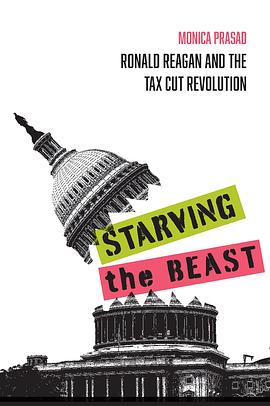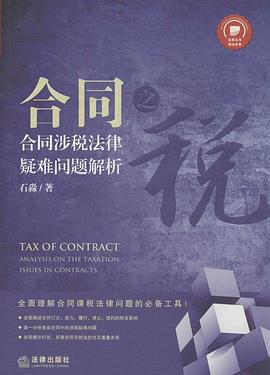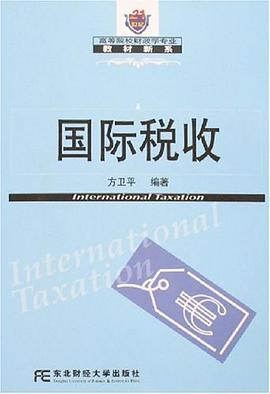

具体描述
Commenting on his collaboration with Geoffrey Brennan on "The Power to Tax", James M. Buchanan says that the book is "demonstrable proof of the value of genuine research collaboration across national-cultural boundaries." Buchanan goes on to say that "The Power to Tax" is informed by a single idea - the implications of a revenue-maximizing government." Originally published in 1980, "The Power to Tax" was a much-needed answer to the tax revolts sweeping across the United States. It was a much-needed answer as well in the academic circles of tax theory, where orthodox public finance models were clearly inadequate to the needs at hand. The public-choice approach to taxation which Buchanan had earlier elaborated stood in direct opposition to public-finance orthodoxy.What Buchanan and Brennan constructed in "The Power to Tax" was a middle ground between the two. As Brennan writes in the foreword, "The underlying motivating question was simple: Why not borrow the motivational assumptions standard in public-choice theory and put them together with assumptions about policy-maker discretion taken from public-finance orthodoxy?" The result was a controversial book - and a much misunderstood one as well. Looking back twenty years later, Brennan feels confirmed in the rightness of the theories he and Buchanan espoused, particularly in their unity with the public-choice tradition: "The insistence on motivational symmetry is a characteristic feature of the public choice approach, and it is in this dimension that "The Power to Tax" and the orthodox public-finance approach diverge."
作者简介
目录信息
Preface xxi
1. Taxation in Constitutional Perspective 3
1.1 The Notion of a “Constitution” 5
1.2 The Logic of a Constitution 6
1.3 The Means of Constitutional Constraint 8
1.4 The Wicksellian Ideal and Majoritarian Reality 9
1.5 The Power to Tax 11
1.6 The Enforceability of Constitutional Contract 13
1.7 Normative Implications 14
2. Natural Government: A Model of Leviathan 16
2.1 Leviathan as Actuality and as Contingency 18
2.2 Monopoly Government and Popular Sovereignty 20
2.3 The Model of ``Leviathan'': Revenue Maximization 33
2.4 The Model of Leviathan as Monolith 35
2.5 The Constitutional Criteria 37
3. Constraints on Base and Rate Structure 42
3.1 Government as Revenue Maximizer Subject to Constitutional Tax Constraints 46
3.2 Tax-Base and Tax-Rate Constraints in a Simple Model 48
3.3 One among Many 55
3.4 Tax Limits and Tax Reform 59
Appendix: Progression in the Multiperson Setting 61
4. The Taxation of Commodities 67
4.1 The Conventional Wisdom 68
4.2 Constitutional Tax Choice 70
4.3 Alternative Forms of Commodity Tax: The Choice of Base 71
4.4 Uniformity of Rates over Commodities 79
4.5 Uniformity of Rates over Individuals 83
4.6 Discrimination by Means of the Rate Structure 84
4.7 Summary 95
Appendix 96
5. Taxation through Time: Income Taxes, Capital Taxes, and Public Debt 99
5.1 Income Taxes, Capital Taxes, and Public Debt in Orthodox Public Finance 101
5.2 The Timing of Rate Announcement 103
5.3 Income and Capital Taxes under Perpetual Leviathan 110
5.4 Leviathan's Time Preference 116
5.5 The Time Preference of the Taxpayer-Citizen with Respect to Public Spending 121
5.6 The Power to Borrow 122
5.7 Conclusions 126
6. Money Creation and Taxation 129
6.1 The Power to Create Money 131
6.2 Inflation and the Taxation of Money Balances: A “Land” Analogy 134
6.3 Inflation and the Taxation of Money Balances 138
6.4 Inflationary Expectations under Leviathan 144
6.5 Inflation, Wealth Taxation, and the Durability of Money 149
6.6 The Orthodox Discussion of Inflation as a Tax 150
6.7 The Monetary Constitution 153
6.8 Inflation and Income Tax Revenue 155
6.9 Monetary Rules and Tax Rules 157
7. The Disposition of Public Revenues 160
7.1 The Model 162
7.2 Public-Goods Supply under a Pure Surplus Maximizer: Geometric Analysis 164
7.3 The Surplus Maximizer: Algebraic Treatment 170
7.4 The Nonsurplus Maximizer 175
7.5 Toward a Tax Policy 177
8. The Domain of Politics 181
8.1 Procedural Constraints on Political Decision Making 182
8.2 The Rule of Law: General Rules 184
8.3 The Domain of Public Expenditures 190
8.4 Government by Coercion 192
9. Open Economy, Federalism, and Taxing Authority 197
9.1 Toward a Tax Constitution for Leviathan in an Open Economy with Trade but without Migration 198
9.2 Tax Rules in an Open Economy with Trade and Migration 200
9.3 Federalism as a Component of a Fiscal Constitution 203
9.4 An Alternative Theory of Government Grants 212
9.5 A Tax Constitution for a Federal State 214
9.6 Conclusions 215
10. Toward Authentic Tax Reform: Prospects and Prescriptions 218
10.1 Taxation in Constitutional Perspective 221
10.2 Tax Reform as Tax Limits 224
10.3 Tax-Rate Limits: The Logic of Proposition 13 229
10.4 Tax-Base Constraints 231
10.5 Aggregate Revenue and Outlay Limits: Ratio-Type Proposals for Constitutional Constraint 233
10.6 Procedural Limits: Qualified Majorities and Budget Balance 234
10.7 Toward Authentic Tax Reform 237
Epilogue 239
Selected Bibliography 241
Index 249
· · · · · · (收起)
读后感
评分
评分
评分
评分
用户评价
相关图书
本站所有内容均为互联网搜索引擎提供的公开搜索信息,本站不存储任何数据与内容,任何内容与数据均与本站无关,如有需要请联系相关搜索引擎包括但不限于百度,google,bing,sogou 等
© 2025 book.quotespace.org All Rights Reserved. 小美书屋 版权所有




















